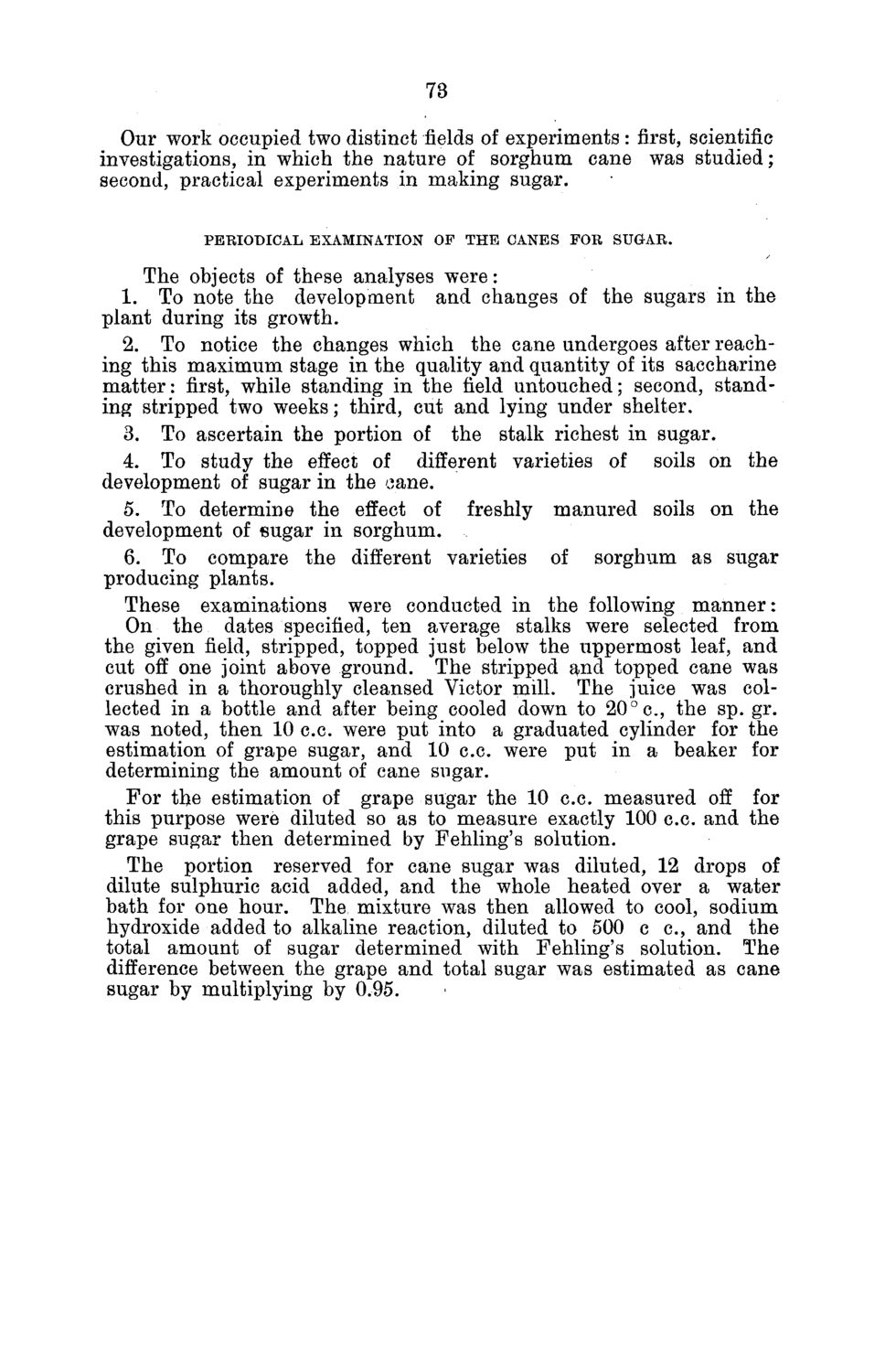| |
| |
Caption: Board of Trustees Minutes - 1882
This is a reduced-resolution page image for fast online browsing.

EXTRACTED TEXT FROM PAGE:
73 Our work occupied two distinct fields of experiments : first, scientific investigations, in which the nature of sorghum cane was studied; second, practical experiments in making sugar. PERIODICAL EXAMINATION OF THE CANES FOR SUGAR. The objects of these analyses were: 1. To note the development and changes of the sugars in the plant during its growth. 2. To notice the changes which the cane undergoes after reaching this maximum stage in the quality and quantity of its saccharine matter: first, while standing in the field untouched; second, standing stripped two weeks; third, cut and lying under shelter. 3. To ascertain the portion of the stalk richest in sugar. 4. To study the effect of different varieties of soils on the development of sugar in the cane. 5. To determine the effect of freshly manured soils on the development of sugar in sorghum. 6. To compare the different varieties of sorghum as sugar producing plants. These examinations were conducted in the following manner: On the dates specified, ten average stalks were selected from the given field, stripped, topped just below the uppermost leaf, and cut off one joint above ground. The stripped g^nd topped cane was crushed in a thoroughly cleansed Victor mill. The juice was collected in a bottle and after being cooled down to 20° c , the sp. gr. was noted, then 10 c.c. were put into a graduated cylinder for the estimation of grape sugar, and 10 c.c. were put in a beaker for determining the amount of cane sugar. For the estimation of grape sugar the 10 c.c. measured off for this purpose were diluted so as to measure exactly 100 c.c. and the grape sugar then determined by Pehling's solution. The portion reserved for cane sugar was diluted, 12 drops of dilute sulphuric acid added, and the whole heated over a water bath for one hour. The mixture was then allowed to cool, sodium hydroxide added to alkaline reaction, diluted to 500 c c , and the total amount of sugar determined with Fehling's solution. The difference between the grape and total sugar was estimated as cane sugar by multiplying by 0,95.
| |